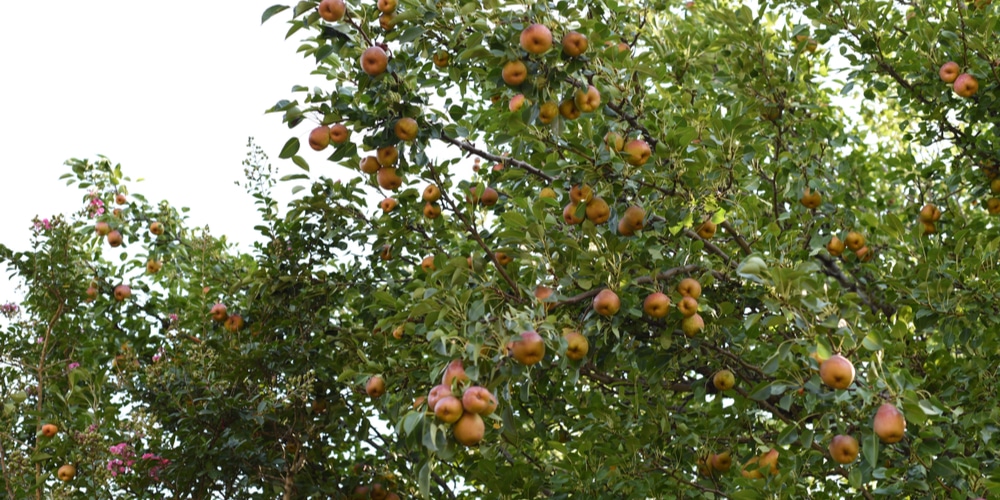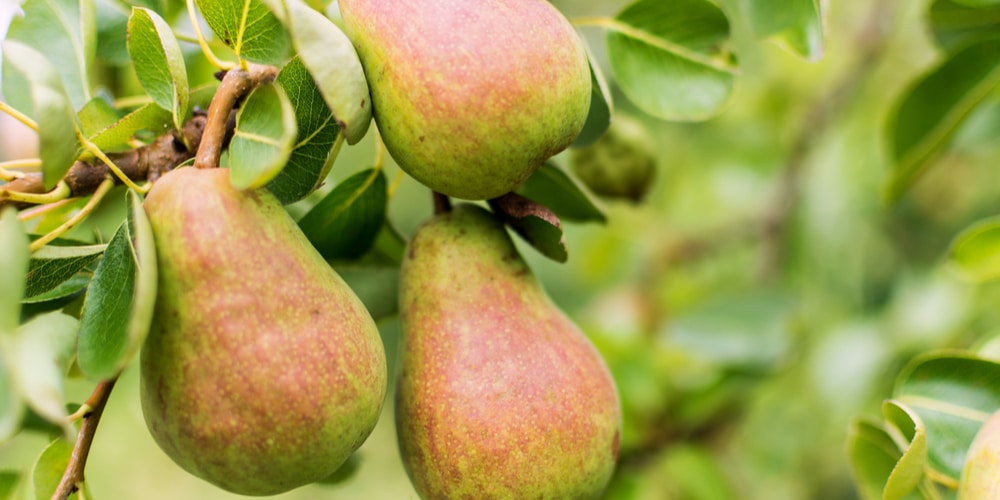It’s common to run into issues when growing anything, even pear trees. Despite the claim that they are very easy to grow, pear trees can catch diseases or react to not having their needs met like any other plant. One of these issues is black leaves. Read on to find out what causes this and how to fix it.
Reasons Pear Tree Leaves Turn Black
There are a few possible reasons why your pear tree leaves turn black. A fungal infection typically causes this issue, but there may also be other issues.
Leaf Blight
You may hear leaf blight referred to by many different names, including black spot, leaf spot, or Fabraea leaf spot.
Leaf blight is a fungal disease that causes dark spots on leaves. If your pear tree’s leaves aren’t entirely black but have black or brown spots, consider leaf blight as one of the possible causes. You will likely also see these spots on the branches and fruit of the tree.
Fire Blight
Fire blight is one of the more severe diseases your pear tree can come down with due to its uncontrollable nature. It spreads quickly and can wreak havoc on your trees. While leaf blight is a fungal infection, fire blight is a bacterial infection, and it causes the leaves to blacken.
This disease is incredibly common for pear trees, unfortunately.
Look for signs of fire blight on the whole tree, not just the leaves. The branches can also succumb to fire blight along with the leaves, but the leaves may not fall. That branch will droop as it dies, in an upside-down J shape.
The fruit can also experience blight. The fruit, which may also have an ooze from the bacteria on it, will turn dark. Blight also causes cankers, which can cause some dieback on the tree.
Damage From Frost
You may not have to concern yourself with disease if you notice blackened leaves on your pear tree after cold weather. Instead, this could result from the leaves freezing and their cells dying. Freezing can still spell bad news for the rest of your tree, though. If it incurs too much frost damage, the whole tree could die.
Pear Scab
Pear scab is another fungal infection that can harm your pear trees. It presents dark spots ranging from olive green to black on the leaves and stems. The fruit will also have lesions, disfiguring them.
What Can I Do To Fix Black Leaves on My Pear Tree?
To fix leaf blight, remove any infected material from the pear tree. Dispose of it in the trash to avoid re-infection. If your trees are too close together, this may promote the spread of leaf blight. Make sure they aren’t overcrowded.
Fire blight also requires pruning to control. It is best done during the winter when the bacteria is dormant. Doing this will help prevent the spread of the bacteria to healthy parts of the tree. Make sure you use sterilized tools when pruning your tree. If you must prune it in the growing season, sterilize the tool between each cut.
If you are dealing with frost damage, it’s essential to take steps to prevent further damage immediately. You can wrap the tree with a material that will help keep in the warm air to help keep the tree warm. Remove any dead or damaged leaves with pruning shears.
If your tree has pear scab, you should remove infected material from the tree and any surrounding areas, including fallen leaves. If the weather is too rainy for too long, you may need to resort to using a fungicide to kill the fungus.
The Bottom Line
Now that you know what may cause your pear tree leaves to turn black, you can figure out the best way to help your tree stay healthy. While remaining vigilant while dealing with fungal and bacterial diseases may be a lot of work, the payoff will be delicious, nutritious fruit!

